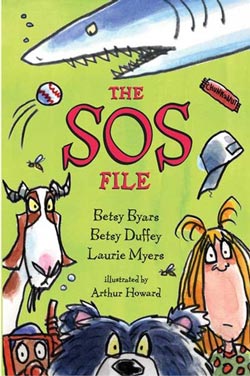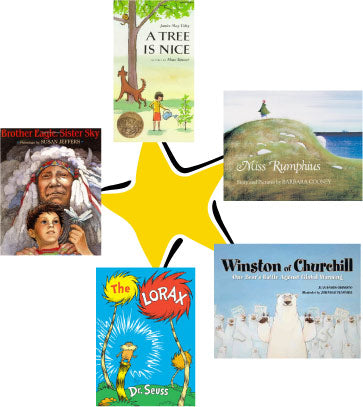Menu
-
- Home
-
About Us
-
The Approach
-
Linking Language & Literacy
-
MindWing Learning
-
Learning Resources
-
SHOP
-
Blog
-
- About MindWing
- Our People
- Contact Us
- Your Account
- Login
-
Spain (EUR €)


Tech Tuesday: Chapter Books and Stickwriting, a Complementary Visual Strategy
May 17, 2016
 Using chapter books, which provide richer and yet more difficult narratives older students must tackle, has been a focus of the MindWing Blog this school year. In several of my posts, I have discussed tech-related avenues to getting the context of chapter books your students may be reading in class (to serve as topics for narrative intervention activities with SGM®), as well as apps that can visually represent the Critical Thinking Triangle®, a great support to review the narrative gist of chapters within a book. In this post, we are going to take a look at a great chapter book to use along with SGM®, The SOS File by Betsy Byars, Betsy Duffy, and Laurie Myers, along with a strategy that aligns with narrative intervention, Stickwriting, or representing narrative elements through quick sketches...
Using chapter books, which provide richer and yet more difficult narratives older students must tackle, has been a focus of the MindWing Blog this school year. In several of my posts, I have discussed tech-related avenues to getting the context of chapter books your students may be reading in class (to serve as topics for narrative intervention activities with SGM®), as well as apps that can visually represent the Critical Thinking Triangle®, a great support to review the narrative gist of chapters within a book. In this post, we are going to take a look at a great chapter book to use along with SGM®, The SOS File by Betsy Byars, Betsy Duffy, and Laurie Myers, along with a strategy that aligns with narrative intervention, Stickwriting, or representing narrative elements through quick sketches...

Maryellen’s Analysis of Emma’s Sample
May 13, 2016
 The following is an analysis of Emma’s written expression of Too Many Tamales. (See previous blog, Analyze A Narrative Written Sample.) Emma’s third grade teacher considered her to be among the top writers in the class and we agree! We’ve included a typed version of her writing, an analysis and a conference suggestion for use during the Writing Process. In our conferencing points, we included mapping using samples of the Story Grammar Marker® iconic maps. If you are not familiar with our Data Collection tools, we have a wide variety to accommodate student needs and your intervention goals. There are also student tools that will assist students in assessing their own work. Below is a sampling of how I would approach conferencing with Emma...
The following is an analysis of Emma’s written expression of Too Many Tamales. (See previous blog, Analyze A Narrative Written Sample.) Emma’s third grade teacher considered her to be among the top writers in the class and we agree! We’ve included a typed version of her writing, an analysis and a conference suggestion for use during the Writing Process. In our conferencing points, we included mapping using samples of the Story Grammar Marker® iconic maps. If you are not familiar with our Data Collection tools, we have a wide variety to accommodate student needs and your intervention goals. There are also student tools that will assist students in assessing their own work. Below is a sampling of how I would approach conferencing with Emma...

Analyze A Narrative Writing Sample
May 10, 2016
 In a recent blog for Cinco de Mayo, we posted the analysis of the book, Too Many Tamales. (Previous blog.)
In a recent blog for Cinco de Mayo, we posted the analysis of the book, Too Many Tamales. (Previous blog.)
Too Many Tamales is quite complex in terms of its content. The reader needs to be attentive to the illustrations as well as the text itself. Complexity of a text poses challenges to students and instructors alike. There are several measures of complexity of text. They are: Lexile Measures, Qualitative Complexity and Knowledge of the competence of the student as reader/listener in order to match him/her to text and task. (Please see references below for further study.) As instructors and interventionists, we are constantly attentive to these measures...

Story Analysis: “Too Many Tamales”
May 03, 2016
 Thursday is the celebration of Cinco de Mayo, a day commemorating a military victory between Mexican and French forces in 1862, but is now a celebration of Mexican culture, food, and music. May is Better Hearing and Speech Month, which celebrates the contributions of speech/language pathologists world-wide striving to enhance the communication abilities of children and adults of all ages. In keeping with both of these celebrations, we decided to feature the picture book entitled, Too Many Tamales by Gary Soto and Illustrated by Ed Martinez, because of the festive nature of the book as well as the fact that it is a picture book written at the highest level of narrative development...
Thursday is the celebration of Cinco de Mayo, a day commemorating a military victory between Mexican and French forces in 1862, but is now a celebration of Mexican culture, food, and music. May is Better Hearing and Speech Month, which celebrates the contributions of speech/language pathologists world-wide striving to enhance the communication abilities of children and adults of all ages. In keeping with both of these celebrations, we decided to feature the picture book entitled, Too Many Tamales by Gary Soto and Illustrated by Ed Martinez, because of the festive nature of the book as well as the fact that it is a picture book written at the highest level of narrative development...

Hands-On Activities for Beginning, Middle and End of a Story
April 28, 2016 1 Comment
![]() Asking students to tell or write a story with a beginning, middle, and end is a daunting task for most. Teaching the narrative structure in a developmental fashion using the SGM methodology is a powerful tool to instruct students in language, comprehension, and writing. The SGM® is an iconic-based tool that (developmentally) represents the necessary elements of story grammar and story organization. We have received a great deal of positive feedback on our post from March 29, 2016, Fun Activity to Reinforce the “Kick-Off” using the Kick-Off icon and the book The Doorbell Rang...
Asking students to tell or write a story with a beginning, middle, and end is a daunting task for most. Teaching the narrative structure in a developmental fashion using the SGM methodology is a powerful tool to instruct students in language, comprehension, and writing. The SGM® is an iconic-based tool that (developmentally) represents the necessary elements of story grammar and story organization. We have received a great deal of positive feedback on our post from March 29, 2016, Fun Activity to Reinforce the “Kick-Off” using the Kick-Off icon and the book The Doorbell Rang...

Five Favorite Books and Downloadable for Earth Day
April 20, 2016
 Earth Day is Friday, April 22, 2016! We have chosen five of our favorite book titles for this day to share with you. Clicking on any of the titles will take you to a description found on Amazon.
Earth Day is Friday, April 22, 2016! We have chosen five of our favorite book titles for this day to share with you. Clicking on any of the titles will take you to a description found on Amazon.
Also, please enjoy this Free Downloadable for your students to use to reinforce the SGM® Setting icon and Earth Day!
Create a bulletin board of ideas entitled… The Setting, Our Earth is Ours to Care For!...
